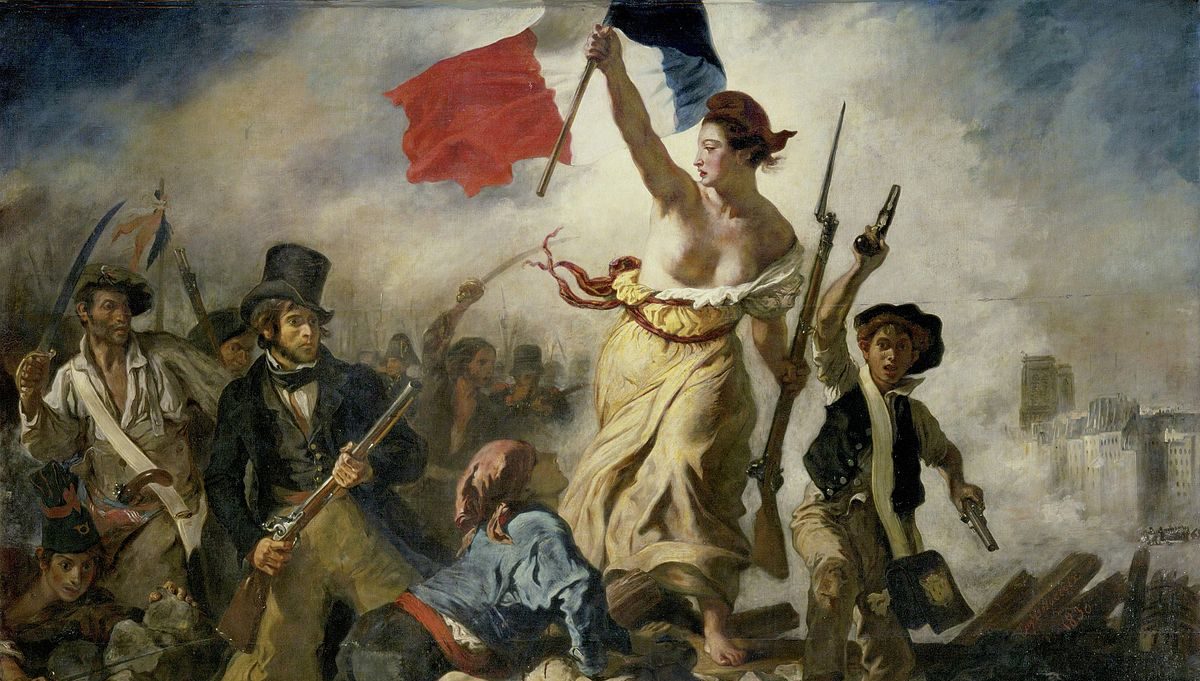“[Liberty Leading the People by Eugene Delacroix] has become a universal symbol of liberty and democracy … used ... to symbolise people’s emancipation from oppressive domination … the allegorical depiction of Liberty draws the eye … [The woman, Marianne] is a tribute to Ancient Greece, the cradle of democracy … In the foreground, there are two notable figures … a member of the lower class … [and a] worker wears a bourgeois outfit … Delacroix clearly suggests that people of all classes came together to fight for a better society. The revolution was not about one class fighting another, but it was about the people rallying against royalist oppression.” - Artsper
The French Revolution: The Catalyst of Modern Democracy in Europe
Revolution Kindles Nationalism
By the end of the revolution, citizens developed a strong sense of national identity.

Liberty Leading the People, Eugène Delacroix, 1830.
Courtesy of the Louvre Museum
Nationalism became widespread throughout France, and united its citizens with a shared goal: The restoration of France’s glory and power.
France’s national anthem, La Marseillaise, was composed during the French Revolution as a way to invigorate morale.